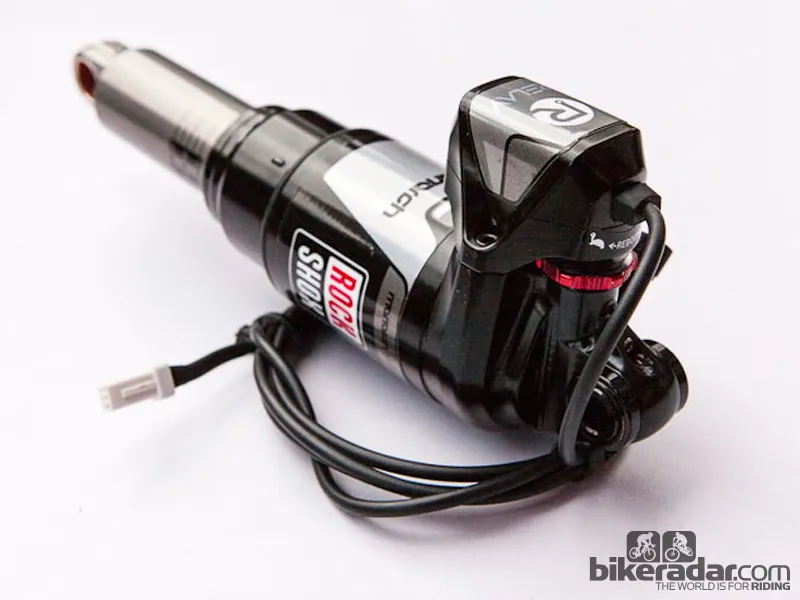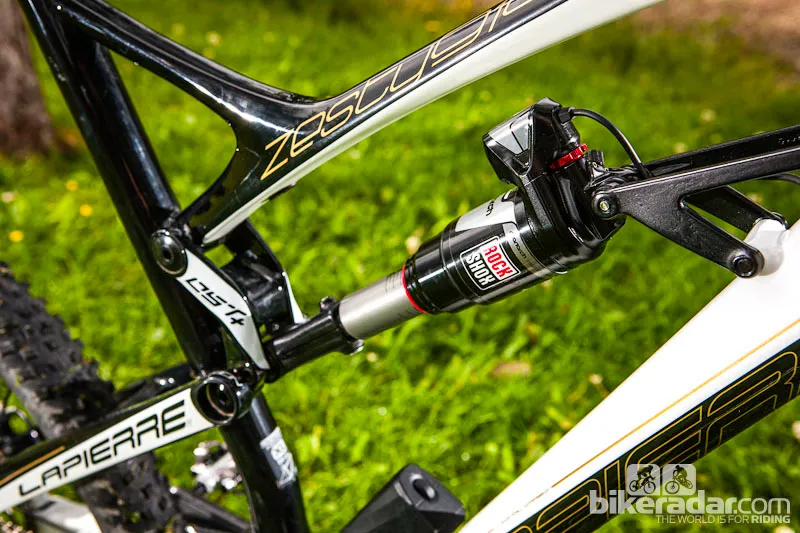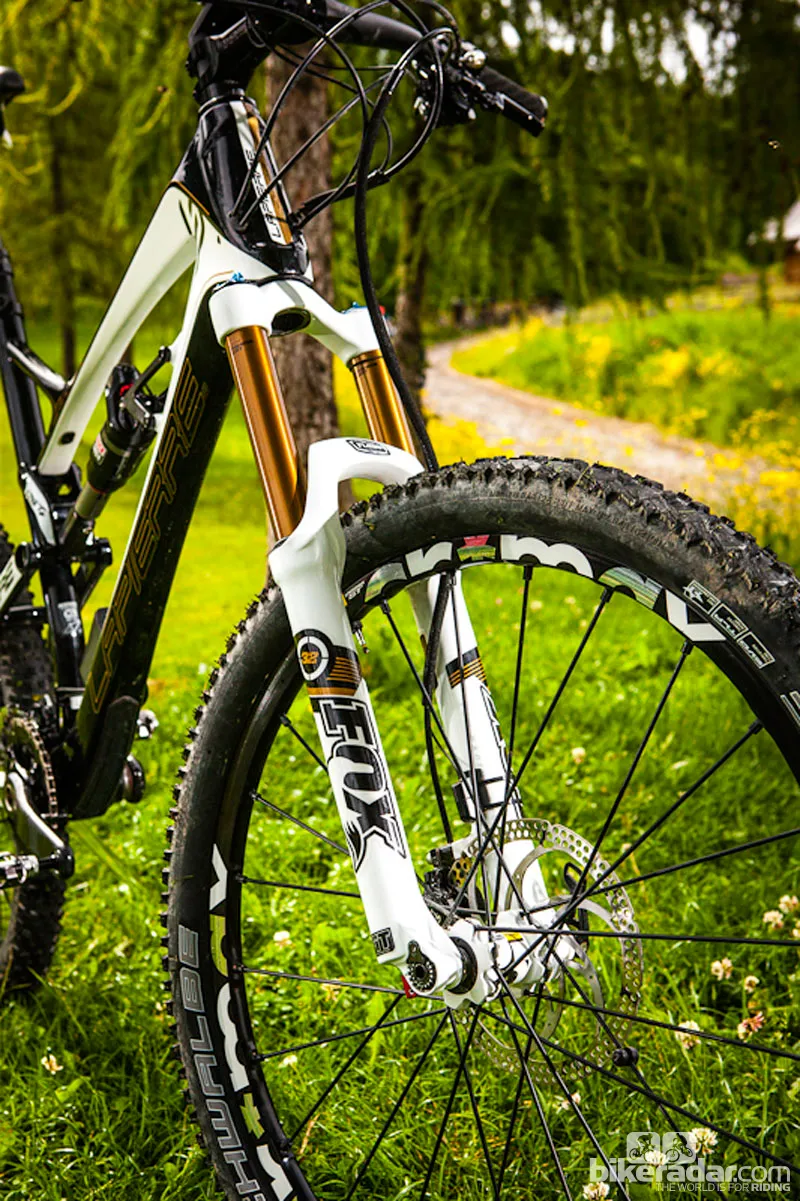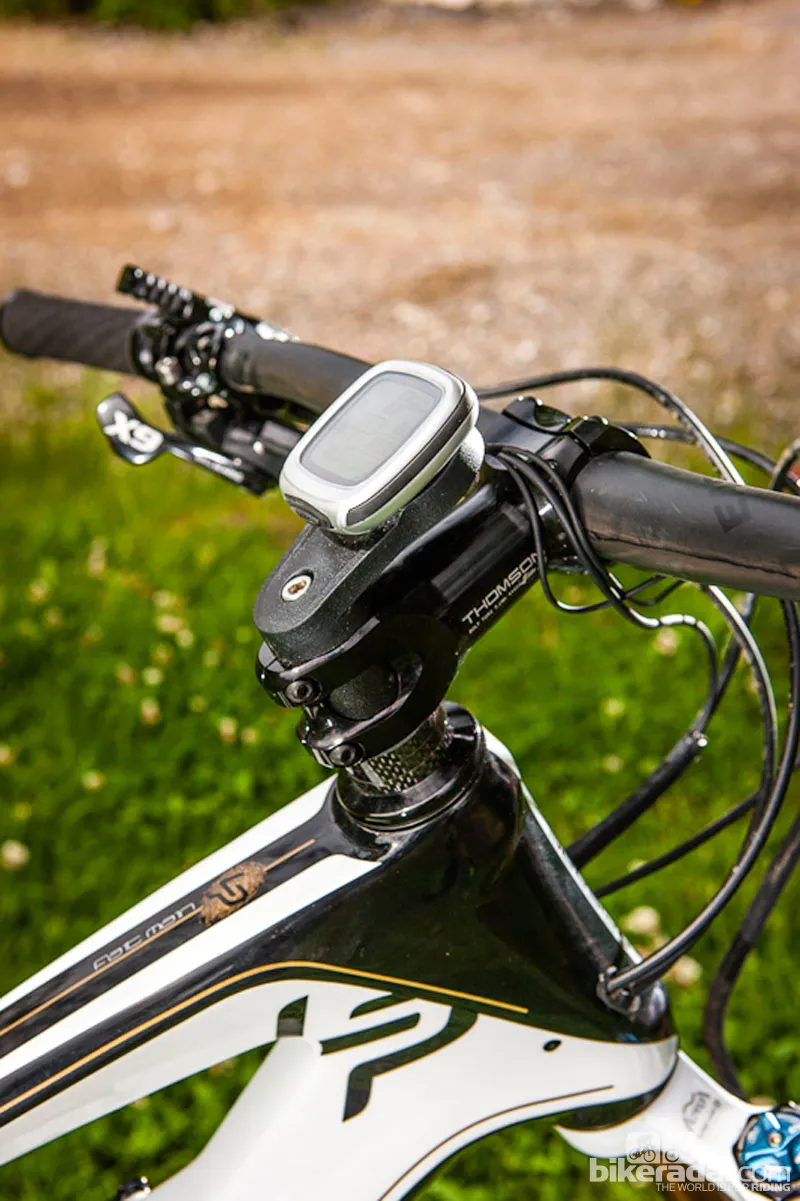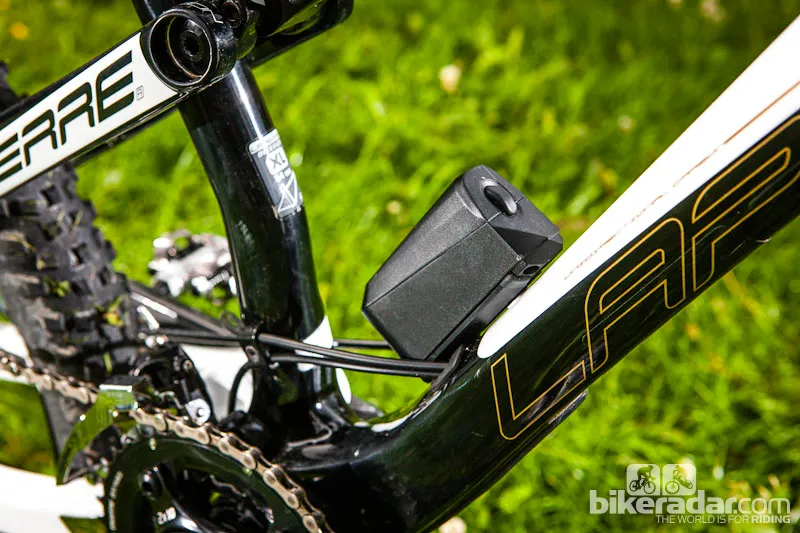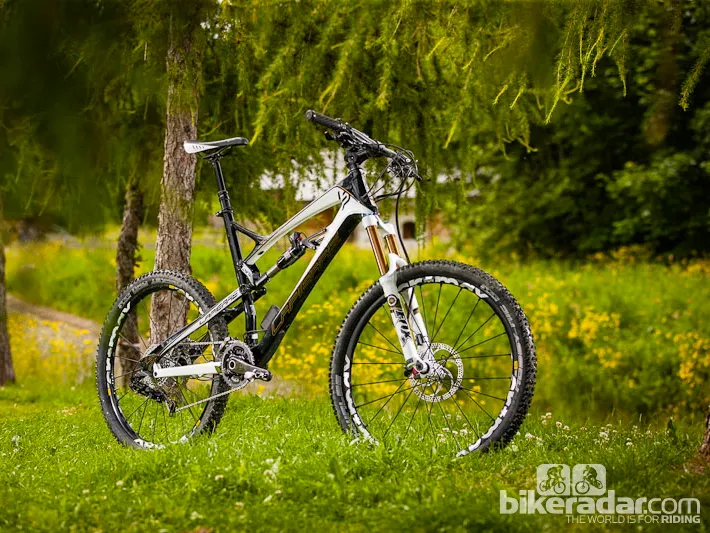In conjunction with RockShox, Lapierre Bikes launches a new suspension system Tuesday dubbed E.I Shock.
The automatic system manages the compression and lock out settings of the rear shock with a system of sensors that monitor bump forces.
The system consists of a stem-mounted head unit, accelerometers at the top and bottom of the fork, cadence sensors in the bottom bracket and a small electronic motor that makes the adjustments to the shock based on the system’s feedback.
The system has been in development for the last five years, in combination with RockShox who make the hardware, and Trelock – the lock manufacturer – who make the software.
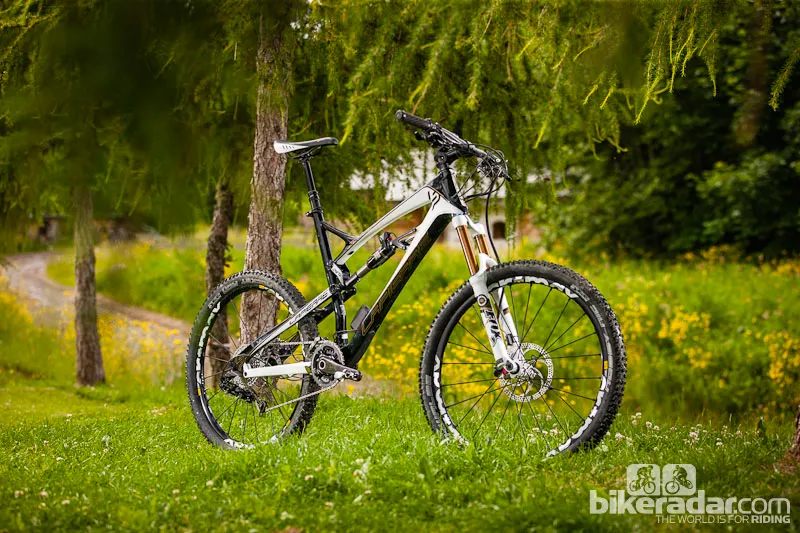
Lapierre has three bikes with the E.I system
In addition to Lapierre, the E.I Shock system will be available on Ghost and Haibike, which are all part of the Accell group.
We don’t yet have full model confirmations for Ghost and Haibike, but Lapierre will be offering the technology as an option on the following models:
- XR 29 - 3 models
- Spicy 516 and 916
- Zesty 314, 414, 514, 714 and 914
So how does it work?
The on-board computer takes measurements from both bump-force and pedalling input, via the accelerometers and cadence sensors, to decide which setting needs to be applied to the rear shock. From the sensor picking up bump movement, it takes a tenth of a second to adjust the shock, which is the time it would take a bump to reach the rear wheel, Lapierre say, following front wheel impact at 36kph.
Essentially, there are four settings for four scenarios:
- Pedaling with no impact – locked out
- Pedaling with small hits - middle compression setting
- Pedaling with bigger hits - fully open
- Pedaling - fully open
Though the technology will be optimised for the relevant bikes as the customer receives them, RockShox have the ability to independently adjust the open, medium and locked-out settings.
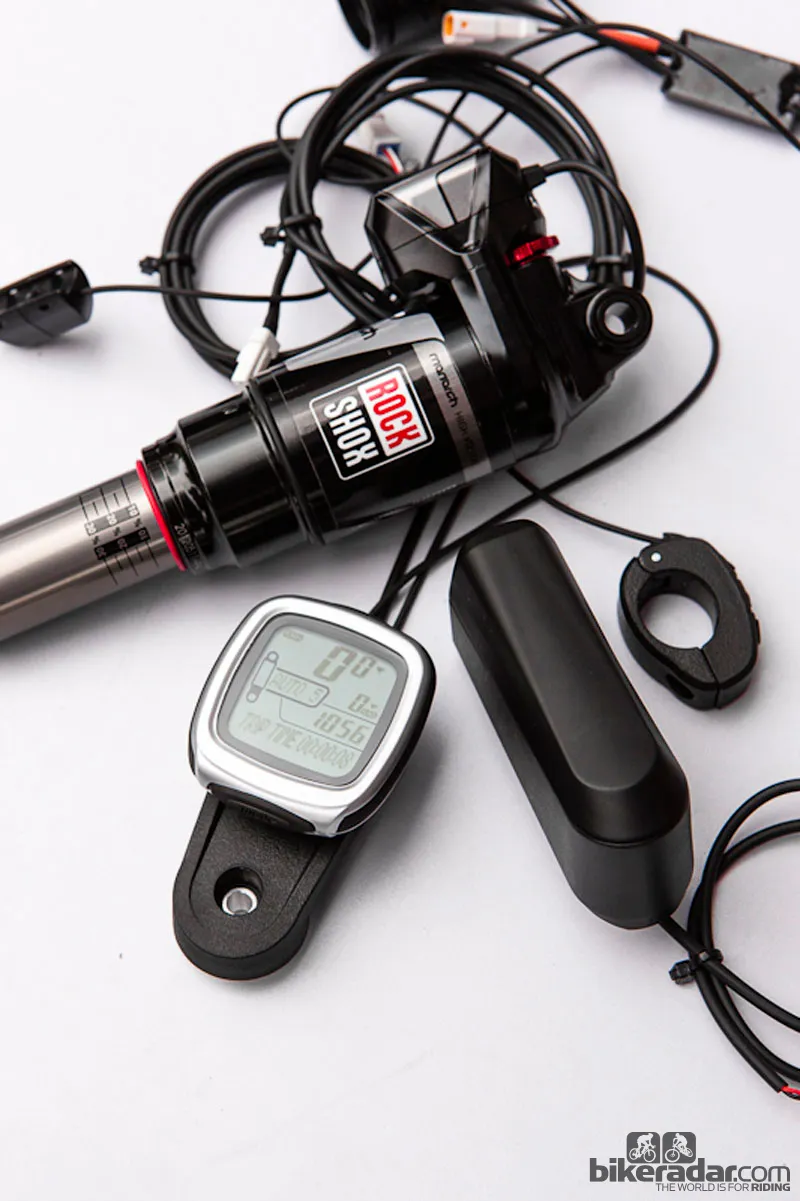
Accelerometers on the top and bottom of the fork tell the system what type of bump is coming towards the rear wheel, and the system quickly adjusts accordingly
How will it fare in the wet?
We’ve been told that the whole system can be completely submerged in water for an hour without damage. Lapierre also said they also blasted the system with high-power jet washes enough to dislodge the the head units, but the system suffered no water damage whatsoever.
How long does it last?
On one charge the unit will manage 25 hours of use. Like Shimano’s Di2, it automatically powers down when not being used.
Fully charging the system takes three hours.
Should the battery fail, run out or a cable get snagged in use, the shock will remain on the last used setting, but it also has a manual adjuster, via an Allen key. This has no indents but allows the user to run from fully open to fully closed.
If the unit was to fail when locked, the shock wouldn’t get damaged on impact as a blow-off feature allows for this.
What else is on the head unit?
The removable head unit is the hub of the system and is controlled by bar-mounted buttons, which are minimal and easy to use. This allows you to adjust the shock from fully closed to fully open on the fly, and apply different sensitivity settings should you require it. The automatic feature is the real beauty though and works incredibly well.
In addition to the shock adjustments, the unit records speed, time, stopwatch, trip time and battery status.
How much does it cost and can I fit it to my bike?
Pricing options will be revealed Wednesday, along with new models, colour ways and full specs.
At least for now, this technology is 100-percent exclusive to Lapierre, Ghost and Haibike.
Does it actually work?
Yes.
Playing with the manual buttons, a little whirr can be heard as the motor engages the compression almost instantly - and it’s really satisfying to use. Where it really comes into its own though is in the automatic setting - getting out of the saddle and stomping on the pedals sees the rear shock lock out with no hesitation, and it impressively opens when aimed at bumps.
What you don’t realise in the automatic setting is just how fast and how often the system adjusts - up to 200times in a minute- which is faster than you could think of operating the unit yourself.
You can really feel the difference when climbing, as the bike sits up in the medium or locked-out position and climbs effectively.
Fork set-up is important. If you’re running a really firm fork you will lose response out back, but you can adjust the sensitivity at the head unit to compensate.
We’ve only managed a few runs on the system, but will be riding the units for the rest of the week and will report back when we’ve had more hours in the saddle. Initial impressions are very good, and it could be the ultimate set up for enduro racing, XC racing and riding - or just for anyone who wants the trickest set up around.
